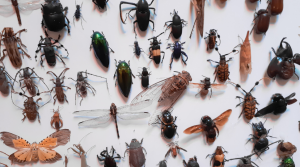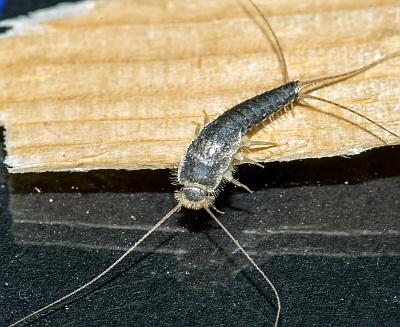Types of Pests in Homes
Pests are a common household nuisance, and many homeowners find themselves dealing with unwanted invaders. These pests can cause significant damage to property, contaminate food, and even pose health risks to family members. Understanding the different types of pests that may infest your home is key to preventing and managing infestations. This article will explore the most common types of pests found in homes, their behaviors, and how to handle them effectively.
Common Types of Household Pests
While pests come in many forms, some are more common than others. Below are some of the most frequently encountered pests in homes, along with tips on how to recognize and control them.
1. Cockroaches
What They Are:
Cockroaches are resilient, nocturnal insects that thrive in warm, humid environments. They are often found in kitchens, bathrooms, and basements, where food and moisture are abundant.
Signs of Infestation:
Small droppings around food sources
A strong, musty odor
Shed skin and egg cases
Visible cockroaches, especially at night
How to Control:
To control cockroach populations, keep your home clean, eliminate food crumbs, seal entry points, and use traps or baits. If the infestation is severe, consider calling a pest control expert for professional treatment.
2. Termites
What They Are:
Termites are wood-destroying insects that can cause significant damage to your home’s structure. There are two common types of termites: subterranean and drywood termites. Subterranean termites live in colonies below ground, while drywood termites infest wood directly.
Signs of Infestation:
Hollow-sounding wood when tapped
Mud tubes along walls or foundations
Small piles of discarded wings around windows or doors
Visible damage to wood structures, such as crumbling or holes
How to Control:
Contact a professional pest control service for termite inspections and treatment. Preventive measures include sealing cracks, removing wood-to-soil contact, and eliminating moisture problems that attract termites.
3. Ants
What They Are:
Ants are social insects that live in colonies. They are drawn to food sources, particularly sugary or greasy substances, and can quickly invade kitchens, pantries, and other areas with easy access to food.

Signs of Infestation:
Visible trails of ants moving to and from a food source
Small nests around the home, often found near windows or doors
Presence of discarded ant bodies near their nests
How to Control:
Seal entry points, store food in airtight containers, and clean surfaces regularly to remove food residues. For severe infestations, use ant baits or contact a pest control professional.
4. Rodents (Mice and Rats)
What They Are:
Mice and rats are common household pests known for their ability to reproduce quickly. They are often drawn to food, warmth, and shelter inside homes, particularly during the colder months.
Signs of Infestation:
Gnaw marks on food packaging, wires, and furniture
Droppings, usually found near food sources or hidden in dark corners
Scurrying or scratching noises, especially at night
Nests made from shredded paper, fabric, or insulation
How to Control:
To prevent rodent infestations, seal cracks and holes in walls, floors, and foundations. Set traps, use rodent repellents, and store food in sealed containers to deter them from entering your home.
5. Bed Bugs
What They Are:
Bed bugs are small, flat, reddish-brown insects that feed on human blood, often during the night. They are commonly found in bedrooms, particularly around the seams of mattresses, cracks in bed frames, and behind headboards.
Signs of Infestation:
Red, itchy bites on exposed skin, often in a linear or clustered pattern
Small blood stains on bedding
Dark spots (feces) on sheets, mattresses, or furniture
Sightings of small, reddish-brown insects
How to Control:
Wash all bedding in hot water, vacuum infested areas thoroughly, and use mattress covers to prevent bed bugs from hiding. For severe infestations, consult a pest control professional for heat treatments or chemical options.
6. Spiders
What They Are:
Spiders are arachnids that often build webs in undisturbed areas of your home, such as attics, basements, and corners. Most spiders are harmless and beneficial, as they feed on other insects, but some, like the black widow or brown recluse, can pose health risks.
Signs of Infestation:
Presence of webs in corners, ceilings, and behind furniture
Visible spiders, particularly at night
Egg sacs or spiderlings in hidden areas
How to Control:
Regularly vacuum webs and spiders, particularly in corners or high-up areas. To deter spiders, use natural repellents like peppermint oil or citrus, and seal cracks and gaps where spiders may enter.
7. Fleas
What They Are:
Fleas are tiny, wingless insects that feed on the blood of animals and humans. They are commonly found in homes with pets, especially cats and dogs, as they often infest their fur.
Flea bites on humans or pets, often around the ankles or legs
Scratching or licking by pets
Visible fleas or flea dirt (black specks) on pets or bedding
Tiny, dark-colored eggs in pet bedding or carpets
How to Control:
Treat pets with flea control products, vacuum carpets and furniture regularly, and wash pet bedding in hot water. For severe infestations, consult a pest control expert to treat the home.
8. Silverfish
What They Are:
Silverfish are small, wingless insects known for their silvery appearance and wriggling, fish-like movements. They prefer damp, dark areas and feed on starchy substances like paper, cardboard, and wallpaper.
Signs of Infestation:
Small, silver-colored insects in damp areas like basements or bathrooms
Holes or damage to paper products, books, and fabrics
Visible shed skins in areas where silverfish are active
How to Control:
Reduce humidity in affected areas, store books and papers in airtight containers, and seal cracks in walls and floors to prevent silverfish from entering.
How to Prevent Pests in Your Home
1. Keep Your Home Clean
Regular cleaning is essential to preventing pest infestations. Clean up food spills immediately, vacuum carpets and furniture, and remove trash regularly. Keeping your home free of food crumbs and waste will deter many pests.
2. Seal Entry Points
Inspect your home for cracks, gaps, or holes in windows, doors, and foundations. Sealing these entry points prevents pests from entering your home.
3. Remove Sources of Food and Water
Pests like ants, cockroaches, and rodents are attracted to food and water. Store food in sealed containers, fix leaky pipes, and remove standing water around your home.
4. Regularly Inspect Your Home
Conduct regular inspections of your home to identify potential pest problems early. Look for signs of pests in hidden areas like attics, basements, and behind furniture. https://gekapestmanagement.com.au/managing-raccoons-and-possums/
5. Call a Professional Pest Control Service
If you suspect an infestation or are dealing with persistent pest problems, contact a pest control professional. They can provide an effective solution and help prevent future infestations.
Conclusion
Understanding the different types of pests that may invade your home is essential for preventing and controlling infestations. By recognizing the signs of common pests like cockroaches, termites, rodents, and bed bugs, you can take the necessary steps to protect your home and family. Regular cleaning, sealing entry points, and removing food and water sources are essential in keeping pests at bay. If you face a severe infestation, don’t hesitate to contact a pest control expert for assistance.
By staying vigilant and proactive, you can ensure your home remains safe, comfortable, and free from pests. For pest inspections in murwillyumbah, see here.


